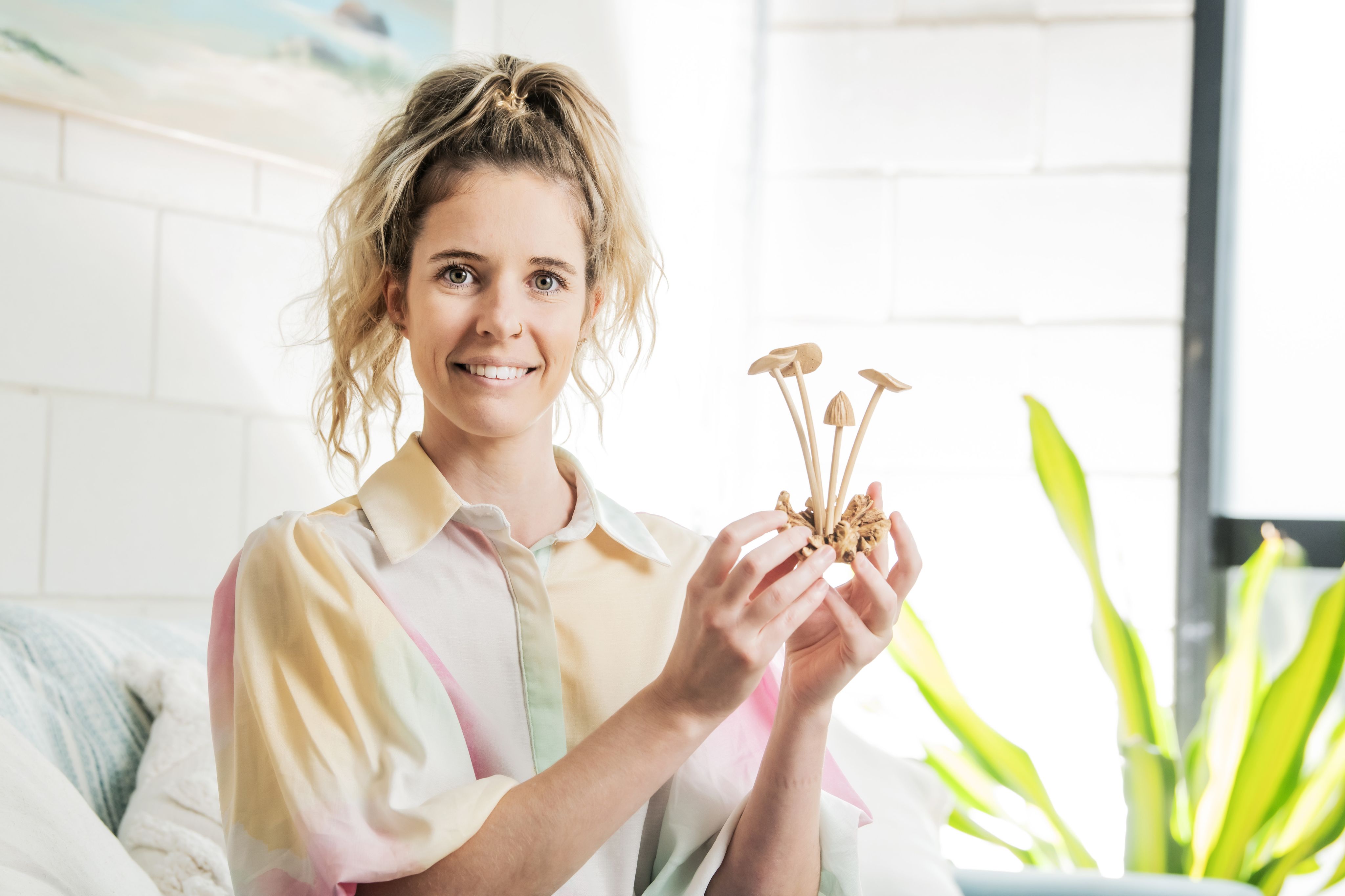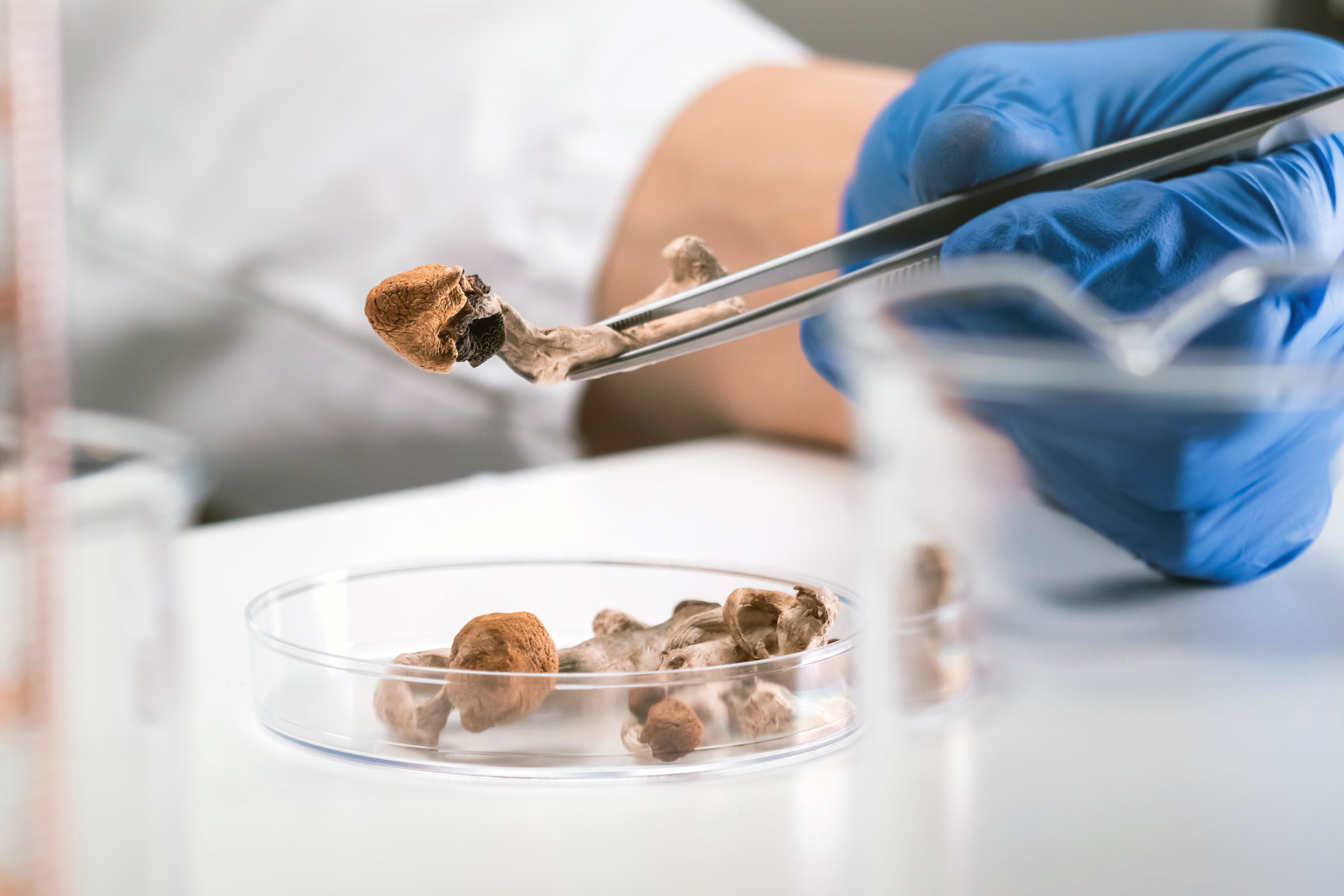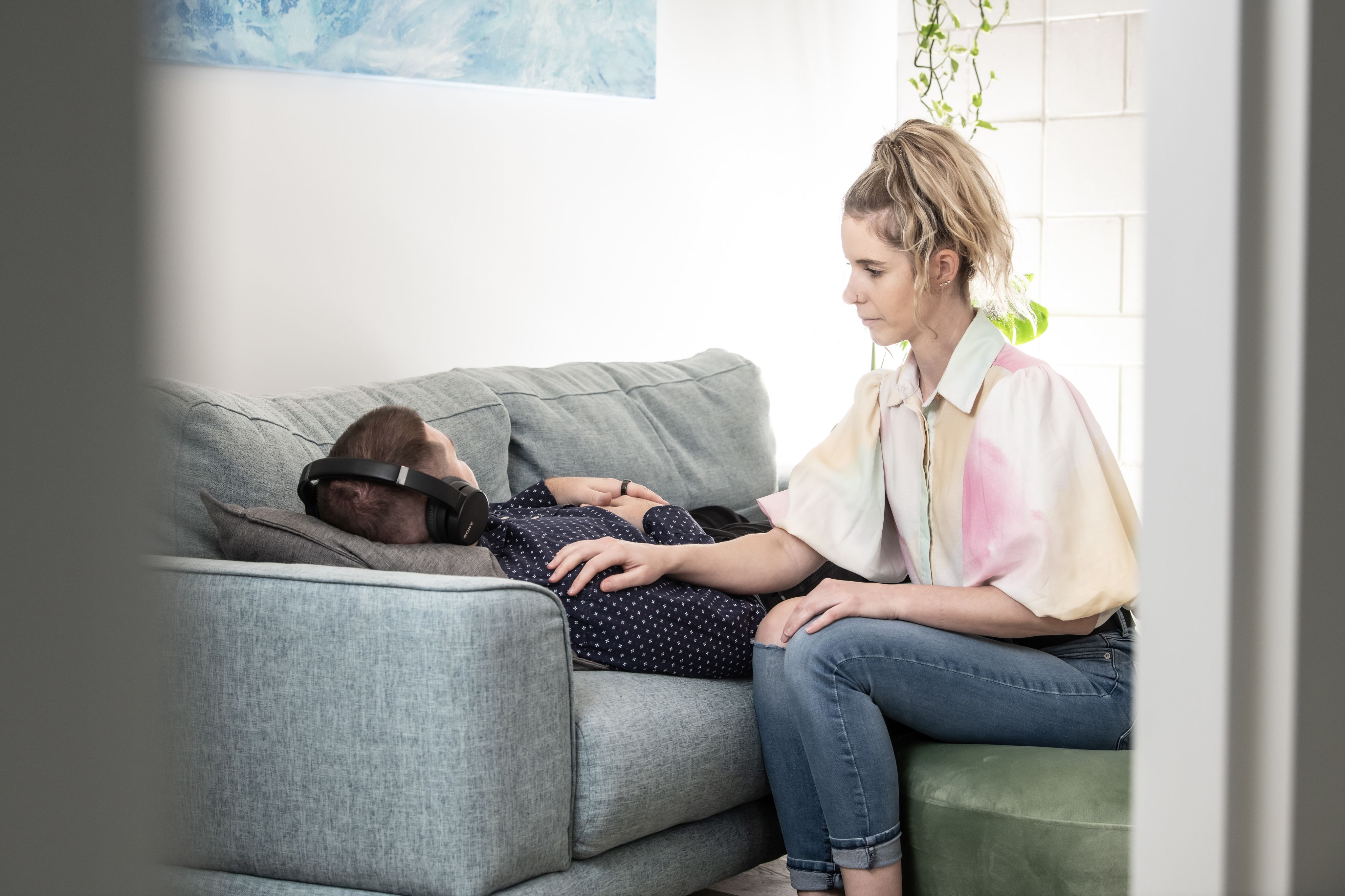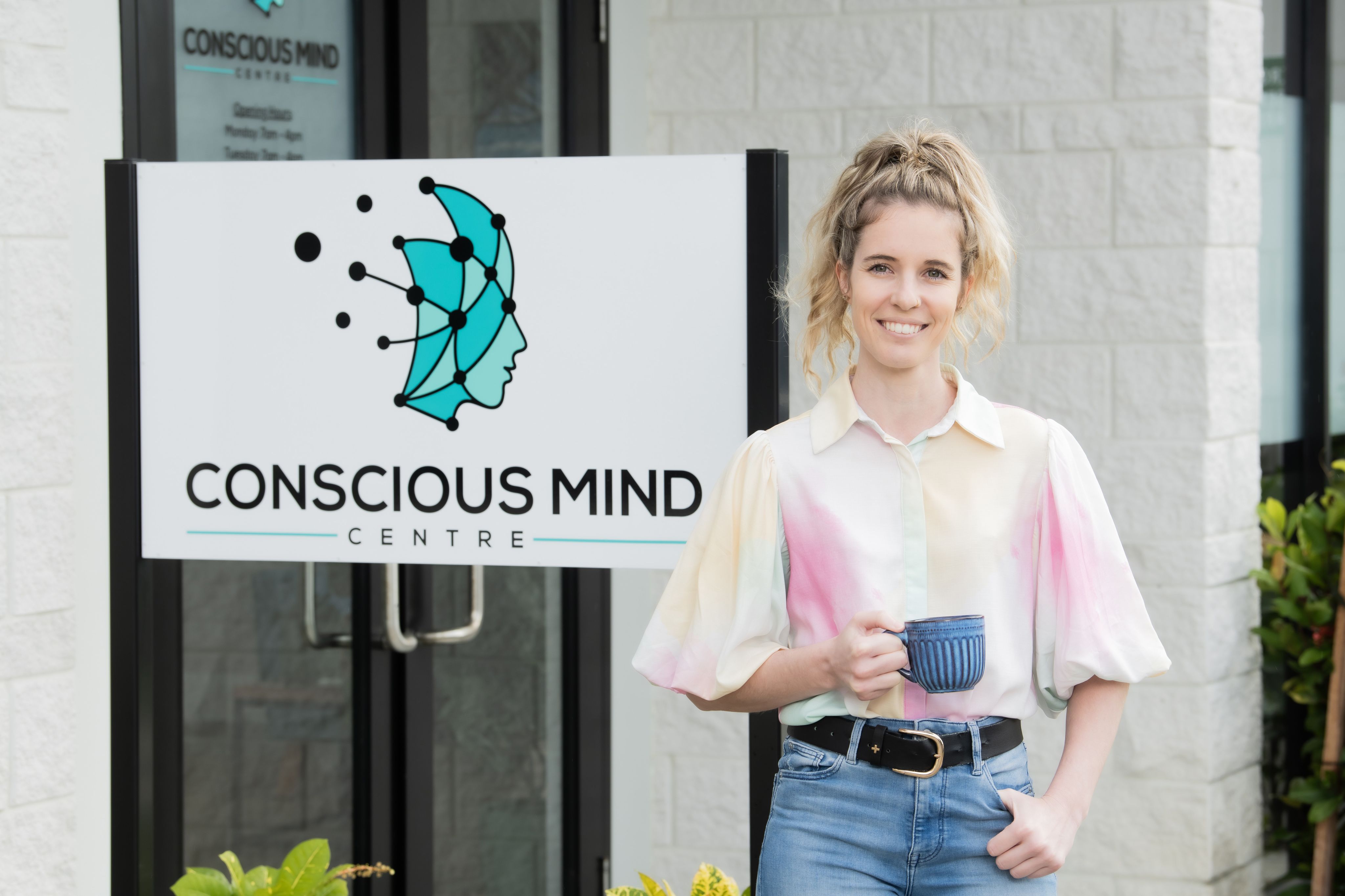

In a quiet corner of the Gold Coast’s northern suburbs, Bond University alumna Shai Hipperson is doing something that would have been unthinkable in Queensland just a few years ago. Her new clinic, Conscious Mind Centre, is the first of its kind in Queensland, and offers something that stands apart from anything most Australians have encountered - psychedelic-assisted therapy, known as Medicine-Assisted Therapy (MAT).
Mrs Hipperson’s MAT clients have usually been struggling with severe trauma-based conditions for some time. They’ve tried talk-based therapy. They’ve cycled through medications. They’ve put in an immense amount of work to lift the weighted blanket of any number of symptoms. But still the shadows linger.
“(MAT) is not a magic bullet,” says Mrs Hipperson, who graduated from Bond University with a Master of Psychology (Clinical).
“It’s not like you take the medicine and suddenly everything is fixed.
“But, for some people, it’s the key that finally opens the door.”
MAT drugs aren’t the over-the-counter kind. They include, for instance, MDMA or psilocybin - the former more commonly known as ecstasy in its tablet form, the latter being the active compound in so-called “magic mushrooms.”
Both have recently been reclassified by Australia’s Therapeutic Goods Administration (TGA) to allow prescription for treatment-resistant depression and Post-Traumatic Stress Disorder under strict clinical conditions, via an approved treatment pathway authorised by the TGA and HREC.
Mrs Hipperson (Class of 2022) is one of a small number of trauma therapists in Queensland working alongside approved psychiatrists authorised to prescribe these substances. She says people are often surprised when she offers historical context to this part of her work.
“Plant medicines have been used for thousands of years,” she says.
Mrs Hipperson, who is Indigenous, points to her own Ngarigo heritage.
“Our ancestors used them for rites of passage, for healing or for ceremonial use,” she says.
“We have documented use of psychedelics going back 10,000 years.”
Mrs Hipperson points out that, by way of example, Lysergic Acid Diethylamide (LSD) was compounded and sold by pharmacies in the 1950s and 1960s for therapeutic use. She says psychiatrists sometimes took LSD so they could better relate to their patients by understanding what a psychotic episode felt like. She can’t help but wonder where we might be if that momentum had been maintained.
“At the time there were around 1000 papers relating to studies involving 40,000 participants about LSD. And the results showed that in a proper clinical setting this kind of treatment was overwhelmingly positive and safe.
“But then the LSD patent ran out at a time that overlapped with the UN Convention and Psychotropic Convention and the onset of the so-called ‘war on drugs’.”
Accordingly, interest and investment dried up.
“Fast forward 50 years to where we are now in terms of how many papers are currently being published and research currently being done and we've only just regained what we lost.”

The treatment sessions Mrs Hipperson offers are not casual experiments. They are meticulously planned, medically overseen, and paired with deep psychotherapeutic work before, during and after.
“You wouldn’t climb Mount Everest without a guide,” Mrs Hipperson says.
“You wouldn’t even start unless you’d prepared your body and mind.
“That’s exactly how we approach this – preparation, support, and then integration afterwards.”
The preparation might involve several weeks of conventional therapy to ensure a client is stable enough to enter an altered state. The medicine session itself takes place in a safe, softly lit room, with music, blankets, and a therapist’s quiet presence. The integration – often overlooked in the public conversation – is where learnings and experiences while medicated are unpacked and utilised.
“This is where the real work happens,” Mrs Hipperson says.
“People can have incredible insights in a session, but if they don’t bring those insights back into daily life, nothing really changes.”
Mrs Hipperson’s own path to this work was gradual. It was also personal. She’d spent years undergoing counselling after her involvement in two significant car accidents. In addition to major spinal injuries, post-traumatic symptoms persisted.
“I started reading the research, hearing the stories, and then training in the field,” she recalls.
“It was clear to me that this wasn’t about chasing some social influence trend - it was about finding another tool for people who’d run out of options.”
According to the Australian Bureau of Statistics, more than 43 per cent of Australians aged between 16 and 85 have experienced a mental disorder at some point in their lives. Among those, trauma and trauma-related conditions are relatively common, but some groups – first responders, military servicemen and women, victims of intergenerational abuse and childhood maltreatment, and sufferers of chronic illness – are highly represented.
Additionally, prevalence of mental health disorders has increased more than 10 per cent among people aged 16 to 24 in the last decade or so. For these reasons, Mrs Hipperson finds it easy to argue in favour of a more expansive approach therapy and treatment. Still, the MAT field is very young.
Australia became the first country in the world to approve the medical use of MDMA and psilocybin at a national level in mid-2023, and the move has been as controversial as it has been celebrated.
Critics say the science is promising but incomplete; advocates argue that the risks of inaction – sticking to the same tools that fail so many - are greater. Mrs Hipperson falls firmly in the latter camp – with a balanced approach to the risks involved.
“I’ve seen people make breakthroughs they never thought were possible,” she says.
“But I’ve also seen people struggle or need more time. It’s intense work. It’s not for everyone.”

43 per cent of Australians aged between 16 and 85 have experienced a mental disorder
Outside the MAT space, Conscious Mind Centre still offers a full suite of conventional therapies: cognitive behavioural therapy, Eye Movement Desensitisation and Reprocessing (EMDR) and somatic-based interventions. But for a small number of clients, the introduction of MAT has been life-changing.
She recalls one client who had been living with unrelenting Post-Traumatic Stress Disorder for decades who was unable to find relief with conventional treatment. Because she could not find an approved clinic in Australia, the client sought MAT overseas and followed up with integration therapy at Conscious Mind Centre.
“Following integration therapy, they told me it was like they could finally take a full breath again,” Mrs Hipperson says.
“They weren’t cured – healing is rarely a straight line – but they could see a future for themselves.”
Stories like that keep her committed, even if the work demands patience, precision and constant learning.
“We’re just at the beginning,” Mrs Hipperson says.
“Five years from now, this might be far more common. Ten years from now, we might wonder why it took us so long.”
Published Wednesday, 10 September, 2025.

Original thinking direct to your inbox

Stories from Bond